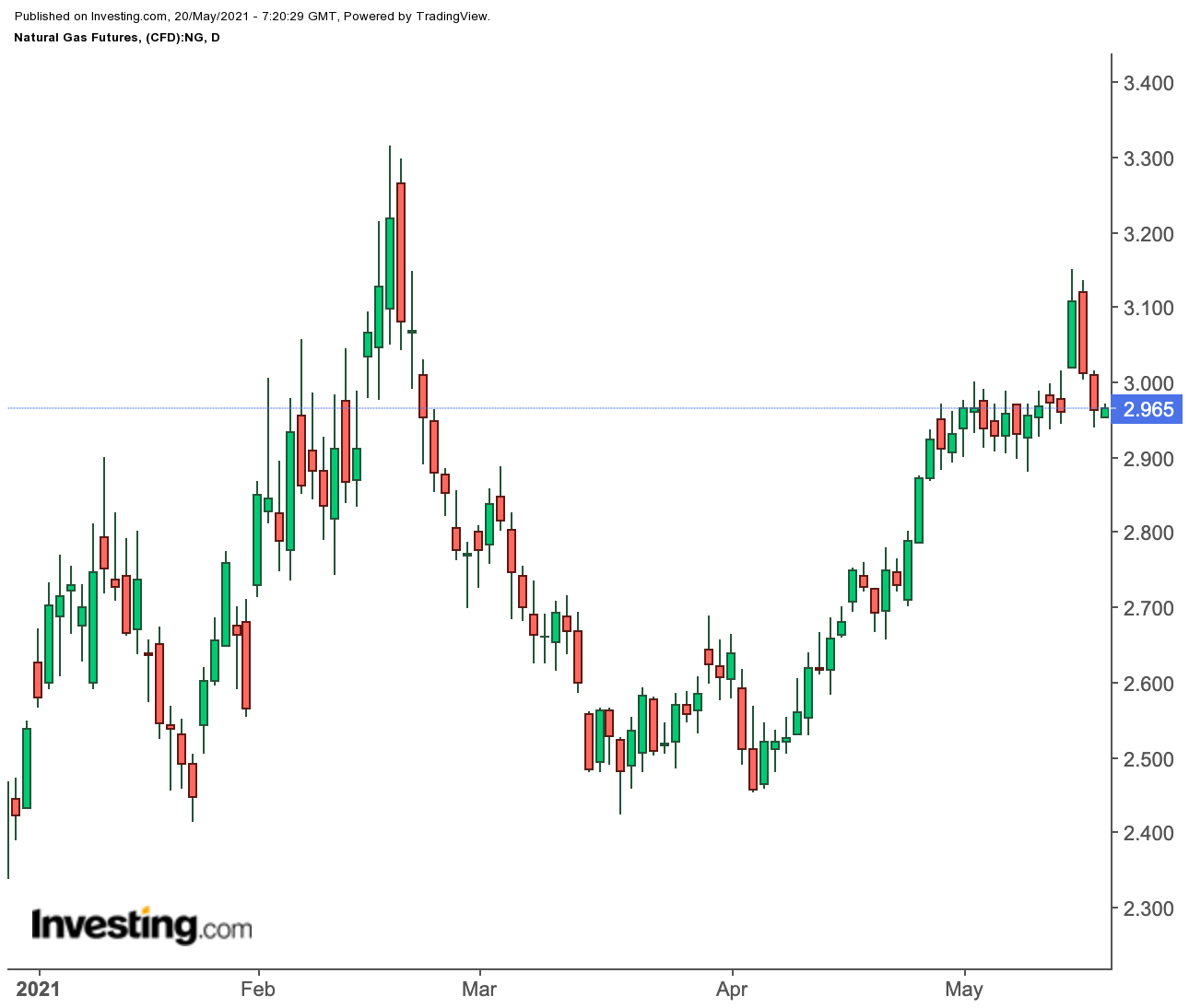As the last vestiges of spring chill abandon the US Northeast, the debate turns to how quickly it will get muggy in the region, thereby requiring daily, if not regular, cooling. That has introduced a new wave of volatility in natural gas prices as the sustainability of $3 pricing comes into focus.
As calendar strips for natural gas futures on the New York Mercantile Exchange’s Henry Hub settled on Wednesday, July (marking advance summer) through March 2022 (signaling the peak of winter) were each above $3 per mmBtu, or million metric British thermal units. Henry Hub’s front-month itself, June, closed at $2.97.

After Monday’s 5% jump to $3.10, the front-month spent the next two days unraveling that extraordinary gain. While the action was nowhere close to the Bucking Bronco ride that natural gas players were used to, it marked the return of volatility after an extended period where gas prices had largely gone one way: up.
The bumpy action came ahead of the Energy Information Administration’s weekly storage report on natural gas that was again forecast to show an abnormally low build in stockpiles of the fuel.
A consensus of analysts tracked by Investing.com are forecasting an injection of just 60 bcf, or billion cubic feet, into storage last week versus the 84 bcf during the same week a year ago and a five-year (2016-2020) average of 86 bcf.
In the previous week to May 7, utilities added 71 bcf to storage.
If the analysts were on target with their forecast, the injection during the week ended May 14 would take stockpiles up to 2.089 tcf, or trillion cubic feet—4.5% below the five-year average and 16.1% below the same week a year ago.
Houston-based gas markets consultancy Gelber & Associate said in a note to clients at Wednesday:
“This week’s upcoming storage report is expected to play a key role in the markets, and a bullish injection report may well push prices back beyond the $3 level.”
Weather data from Refinitiv, meanwhile, showed temperatures a little lower than normal last week with 54 HDDs, or heating degree days, versus a 30-year average of 35 HDDs for the period.
HDDs are used to estimate demand to heat homes and businesses and measure the number of degrees a day's average temperature is below 65 degrees Fahrenheit (18 degrees Celsius).
Weather-driven domestic demand was light amid mild spring temperatures, industry portal naturalgasintel.com reported on Wednesday.
Bespoke Weather Services, in a forecast published on the portal, lowered its gas-weighted degree days projection in its 15-day forecast by a few days.
“There is still a solid surge of heat into the Midwest and East” by the coming weekend, “peaking early next week with some 90s in the Ohio Valley over to the Mid-Atlantic,” Bespoke said.
However, it added that “temperatures in the South remain quite ordinary for this time of year, though we do see some above-normal temperatures in the Southeast as we head toward the early part of June.”
That noted, the firm said it still expects the arrival of steady cooling demand soon. Bespoke “remains in favor of broad coverage of above-normal temperatures for the month of June.”
Temperatures might be “lacking extremes in any given area” but should lead to “above-normal demand for the nation as a whole,” Bespoke added.
Technical charts of natural gas, meanwhile, suggest more upside in the near term.
Investing.com’s Daily Technical Outlook continues to rate the June gas contract a “Buy”, forecasting a three-tier Fibonacci resistance that begins at $3.006, then moves up to $3.048 before peaking at $3.081.
Disclaimer: Barani Krishnan uses a range of views outside his own to bring diversity to his analysis of any market. For neutrality, he sometimes presents contrarian views and market variables. He does not hold a position in the commodities and securities he writes about.
